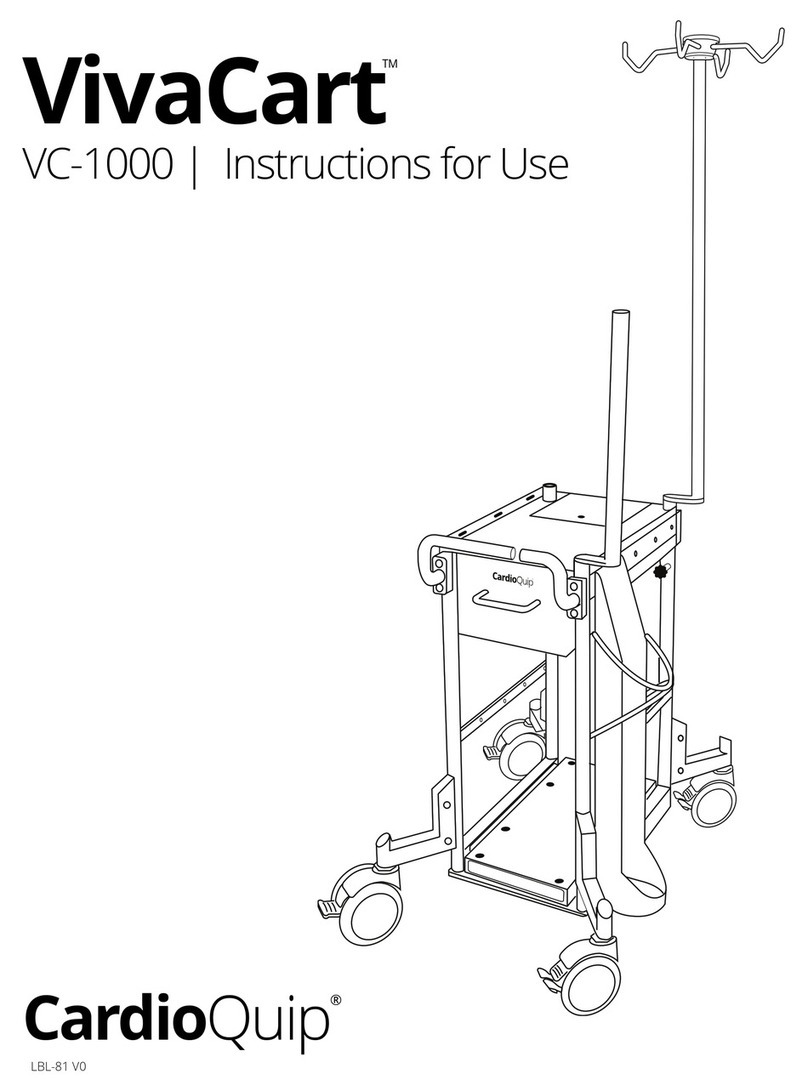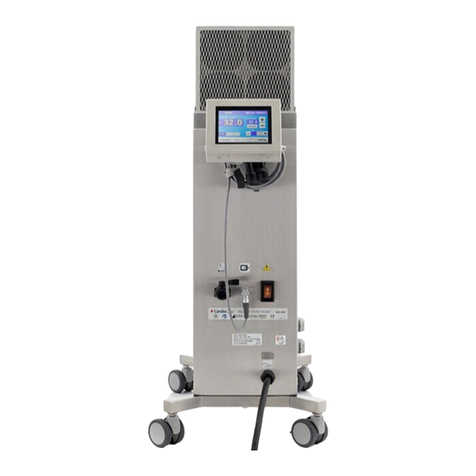Limited Warranty
A. This LIMITED WARRANTY provides the following assurance to the purchaser of the CardioQuip
MCH-1000 Series Cooler-Heater System, hereafter referred to as the “Equipment”:
(1) Should the Equipment fail to function within normal tolerances due to a defect in materials or
workmanship within a period of one (1) year, commencing with the delivery of the Equipment to
the purchaser, CardioQuip will at its option:
(a) repair or replace any defective part or parts of the Equipment;
(b) issue a credit to the purchaser equal to the Purchase Price, as defined in Subsection A(2),
against the purchase of the replacement Equipment; or
(c) provide a functionally comparable replacement Equipment at no charge.
(2) As used herein, Purchase Price shall mean the lesser of the net invoiced price of the original, or
current functionally comparable, or replacement Equipment.
B. To qualify for this repair, replacement or credit set forth in Section A, the following conditions must
be met:
(1) The Equipment must be returned to CardioQuip within thirty (30) days after discovery of the
defect. CardioQuip may, at its option, repair the Equipment on site.
(2) The Equipment must not have been repaired or altered outside of CardioQuip's factory in any way
which, in the judgment of CardioQuip, affects its stability and reliability. The Equipment must not
have been subjected to misuse, abuse or accident.
(3) The Equipment must not have been shipped by commercial carrier beyond the point of
CardioQuip’s initial shipment.
C. This LIMITED WARRANTY is limited to its express terms. In particular:
(1) Except as expressly provided by this LIMITED WARRANTY, CARDIOQUIP IS NOT
RESPONSIBLE FOR ANY DIRECT, INCIDENTAL OR CONSEQUENTIAL DAMAGES
BASED ON ANY DEFECT, FAILURE OR MALFUNCTION OF THE EQUIPMENT,
WHETHER THE CLAIM IS BASED ON WARRANTY, CONTRACT, TORT, OR
OTHERWISE.
(2) This LIMITED WARRANTY is made only to the purchaser of the Equipment. AS TO ALL
OTHERS, CARDIOQUIP MAKES NO WARRANTY, EXPRESS OR IMPLIED, INCLUDING,
BUT NOT LIMITED TO, ANY IMPLIED WARRANTY OF MERCHANTABILITY, OR
FITNESS FOR A PARTICULAR PURPOSE WHETHER ARISING FROM STATUTE,
COMMON LAW, CUSTOM OR OTHERWISE. NO EXPRESS OR IMPLIED WARRANTY TO
THE PATIENT SHALL EXTEND BEYOND THE PERIOD SPECIFIED IN A(l) ABOVE. THIS
LIMITED WARRANTY SHALL BE THE EXCLUSIVE REMEDY AVAILABLE TO ANY
PERSON.
(3) The exclusions and limitations set out above are not intended to, and should not be construed so
as to contravene mandatory provisions of applicable law. If any part or term of this LIMITED
WARRANTY is held to be illegal, unenforceable or in conflict with applicable law by a court of
competent jurisdiction, the validity of the remaining portions of the LIMITED WARRANTY shall
not be affected, and all rights and obligations shall be construed and enforced as if this LIMITED
WARRANTY did not contain the particular part or term held to be invalid. This LIMITED
WARRANTY gives the purchaser specific legal rights. The purchaser may also have other rights
which vary from state to state.
(4) No person has any authority to bind CardioQuip to any representation, condition or warranty
except this LIMITED WARRANTY.





























